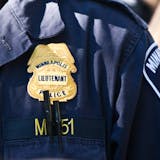There are two NFL changes in the 21st Century that continue to surprise: the need teams feel to rush young quarterbacks into the lineup, and the injuries that tear apart most every offensive line during the course of a season.
For decades, even the best of quarterback prospects generally had to be taught the pro game for a couple of seasons before they were anointed as a starter. As recently as 1999, Vikings coach Dennis Green spent the offseason looking for a veteran option before he finally gave the job to Daunte Culpepper, who had played not at all as the No. 11 overall pick in 1998.
Now, we have teams allowing overmatched rookies such as DeShone Kizer and Nathan Peterman to be humiliated by making starts.
The decimation of offensive lines is more startling. The Vikings joined the NFL in 1961, and for decades it seemed that the groups least affected by injuries here and around the league were offensive lines.
The brainiacs in football will tell you the main reason for today's injuries is that huge offensive linemen are being forced to move more rapidly and at extra distance to block defenders who are faster, stronger and aligned in more exotic schemes.
It is close to impossible to put five competent linemen together and count on them to stay healthy for several years. There are also economics at play, with the value of offensive tackles on the free-agent market.
What any contending team in the NFL comes to appreciate on the offensive line is a reliable utility man, an Eduardo Escobar of football.
The Vikings' best in this role was Everett Lindsay, a fifth-round draft choice in 1993 from Ole Miss. Lindsay played seven seasons for the Vikings, with 31 starts in 104 games, at both guards and tackles.



